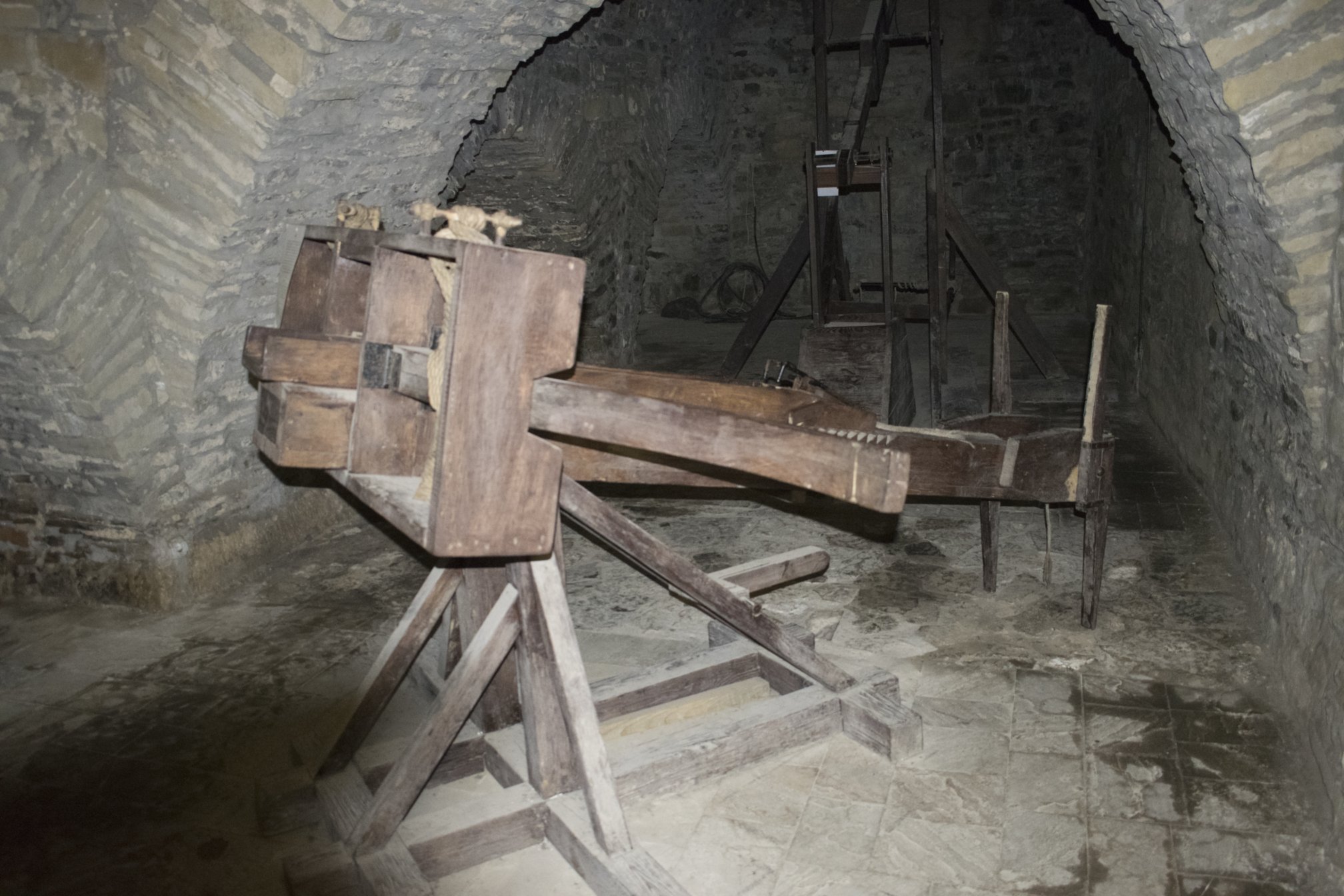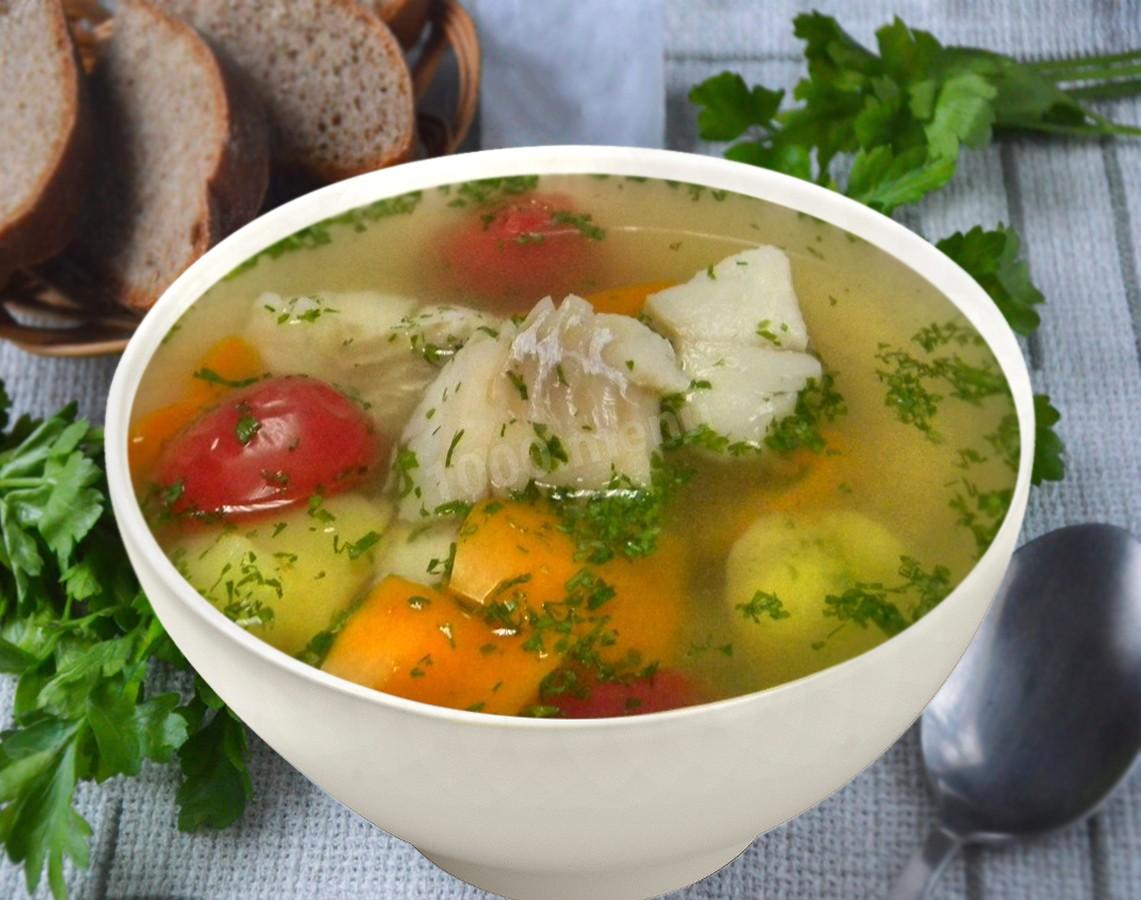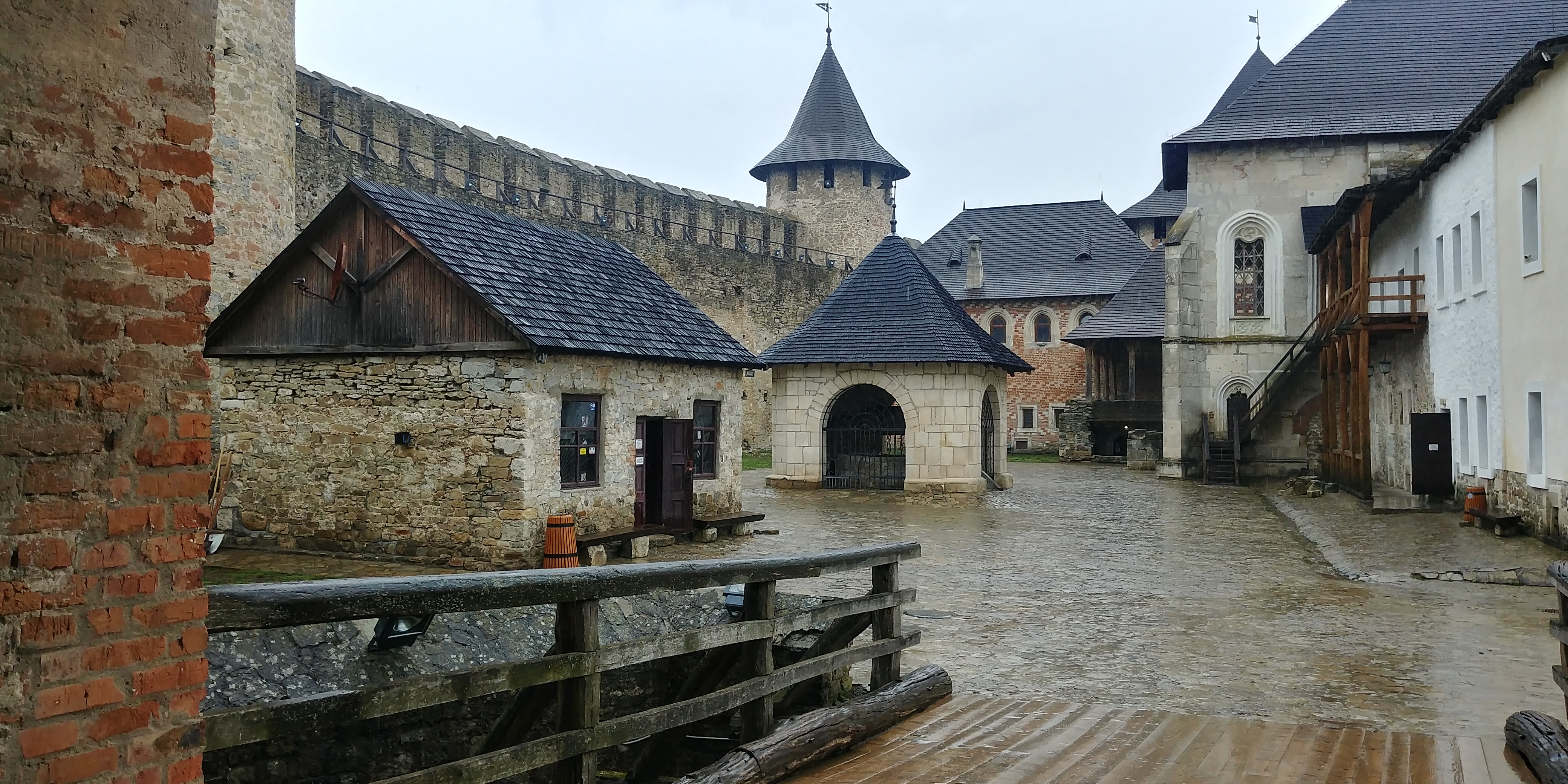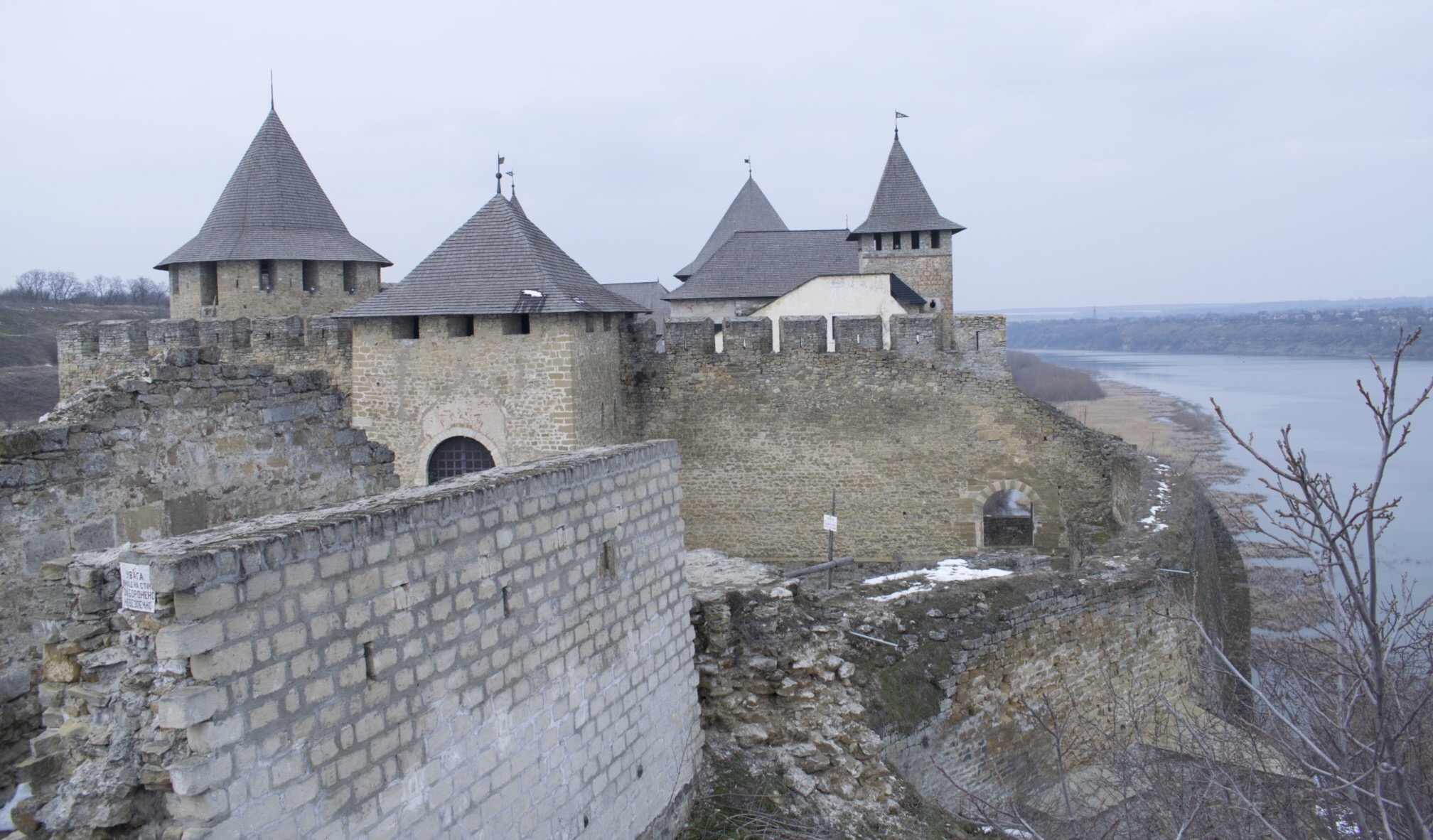Route maps to fortress and town Khotyn see on Kamianets-Podilskyi page (20 km only between sights)
The stronghold on the Dniester river. The failures and victories
Khotyn is the center of Khotyn district of Chernivtsy region now, not big town with huge history... From ancient times the fertile lands, a plenty of fish in the river and the blue artery of Dniester, wich was an important transportation and trading way, attracted the settlers here. People wanted to live here. That's why the town has a name of Khotyn (khotity - to want). By other stories, the name of the town is connected with the name of Dacian leader Khotyzon, who is considered to be the founder of Khotyn. The load supplies and different goods, which were trading in Tir (Akkerman, Bilgorod-Dniestrovsky) and other settlements-colonies of the northern Black Sea territories of ancient Greeks, were transported from Karpaty mountains and upper Dniester territory by the water-way of Dniester to the Black Sea. The ancient coin found on the territory around Khotyn, what is the evidence of the trading development of the region, is dated by the time of Macedonian tsar Filip II (359-335 BC), Alexandr Macedonsky's father, governing.
The Dacian settlements, the ancestors of modern Romanian, lived on the right coast of Dniester to the Danube Delta, struggling with the Rome Empire for their freedom. In the 1st century A.D. the legions of Rome Emperor Trayan had defeated the army of Dacian tsar Detsebal, after what the boarders of the Rome Empire spread to the Dniester river. Under the Rome govern the Dacian settlements partly assimilated with the occupiers, had been getting the progress of their culture - Latin, the tradition of the construction, the clothes and the weapon.
After Rome destroying by the barbarian (in 476) the praslavic tribes of ants comes to Khotyn territory from the left coast of Dniester. After some time, Slavic settled along both coasts of Dniester, constructed the towns and fortification. By the researchers' data, Khotyn was founded on the place of Slavic settlements of Timorese (6-8 centuries). In the written origins the town is at first mentioned in 1002. Then it belonged to Kievan Rus, after the disintegration of which, from the end of 12th - the beginning of the 13th centuries, it became a part of Galytsian-Volyn state, and before 40-50 of 13th century became a fortified town.
 At the place of the wooden fortress the one made of stone was erected by Danylo Galytsky's order. It had had to control the ferry and defense the locals from Tatars' raids, which were moving up along the Dniester river. But after the conquest of Galytsian-Volynsk Power by Tatars-Mongolians under the leadership of Khan Burunday, the Khotyn fortress, as the other rusyn fortresses, was destroyed for Tatarian cavalry could gather the tribute without barriers, steal and take Slavics to capture. The captured were sent to the markets of the slaves to Kafa (Feodosiya), Akkerman (Bilgorod-Dnistrovsky) for sale to Genoese. These were they who rebuilt the Khotyn fortress in the 13th century, where they had trading storages. In the middle of the 14th century the army of Grand Duchy of Lithuania got out Tatars from the Slavic territories of Podillya and Upper Dniester. In the end of 14th century this territory became a part of Moldavian Duchy, and already in the beginning of the 15th century Khotyn fortress became a residence of the governors of Moldova.
At the place of the wooden fortress the one made of stone was erected by Danylo Galytsky's order. It had had to control the ferry and defense the locals from Tatars' raids, which were moving up along the Dniester river. But after the conquest of Galytsian-Volynsk Power by Tatars-Mongolians under the leadership of Khan Burunday, the Khotyn fortress, as the other rusyn fortresses, was destroyed for Tatarian cavalry could gather the tribute without barriers, steal and take Slavics to capture. The captured were sent to the markets of the slaves to Kafa (Feodosiya), Akkerman (Bilgorod-Dnistrovsky) for sale to Genoese. These were they who rebuilt the Khotyn fortress in the 13th century, where they had trading storages. In the middle of the 14th century the army of Grand Duchy of Lithuania got out Tatars from the Slavic territories of Podillya and Upper Dniester. In the end of 14th century this territory became a part of Moldavian Duchy, and already in the beginning of the 15th century Khotyn fortress became a residence of the governors of Moldova.
More pictures see in photo album...
Kiev & Ukraine Private Tour Guide
______________________________
Cozatska Yushka (Cossacks' Soup)
Bring the water to the boil and cook the cock and the onion to make transparent broth. Remove the cook and onion, add the carrot, celery, parsnip and parsley roots and cook s are half-done. Clean, gut and scale the fish (the tench and sheatfish than half a kilo each) and add to the broth. Season with salt, pepper and finely chopped dill or parsley.
The soup was traditionally served in a large deep bowl to retain the fish complete. The cock ite dish with buckwheat groats or noodles.
(8 liters water, 1 cock, 2-2,5 kg fish (tench, sheatfish, zander, etc.), 2-3 onions, 1 carrot, 1 parsley root, 1 parsnip root, part of celery root, salt, pepper)
Rybna Yushka Po-Polissky (Poiissya Fish Soup)
 Cook the onion bulb and the small fish (ruff, small perch, or an in boiling water. The fish broth should not be boiling hard; otherwise it will not be transparent enough. Remove the fish and bones from the broth. I to the boil again, season with salt and pepper, add a slice of salted i mushrooms, potatoes, carrot (cut in strips), parsley or parsnip re and the larger fish (ide, perch, tench or zander) cut in pieces. Braise at a low heal, kit do not cover the saucepan with a lid. To reduce the boiling and thus preserving the fish from overcooking, add one or two spoons of cold water. Serve the fish with finely chopped parsley or celery.
Cook the onion bulb and the small fish (ruff, small perch, or an in boiling water. The fish broth should not be boiling hard; otherwise it will not be transparent enough. Remove the fish and bones from the broth. I to the boil again, season with salt and pepper, add a slice of salted i mushrooms, potatoes, carrot (cut in strips), parsley or parsnip re and the larger fish (ide, perch, tench or zander) cut in pieces. Braise at a low heal, kit do not cover the saucepan with a lid. To reduce the boiling and thus preserving the fish from overcooking, add one or two spoons of cold water. Serve the fish with finely chopped parsley or celery.
Beginning from the 1950s, the Poiissya region residents have been with a whole tomato, either fresh or pickled depending on the season.
(2 liters water, 300-400 g small fish, 300-400g small fish, 500-600 g ide, tench, zander or perch, 1 onion, 1 carrot, 2 potatoes, 100 g fat, 2-3 dried mushrootns, 1 tomato, 1 bunch each of parsley and celery, pepper, salt)




